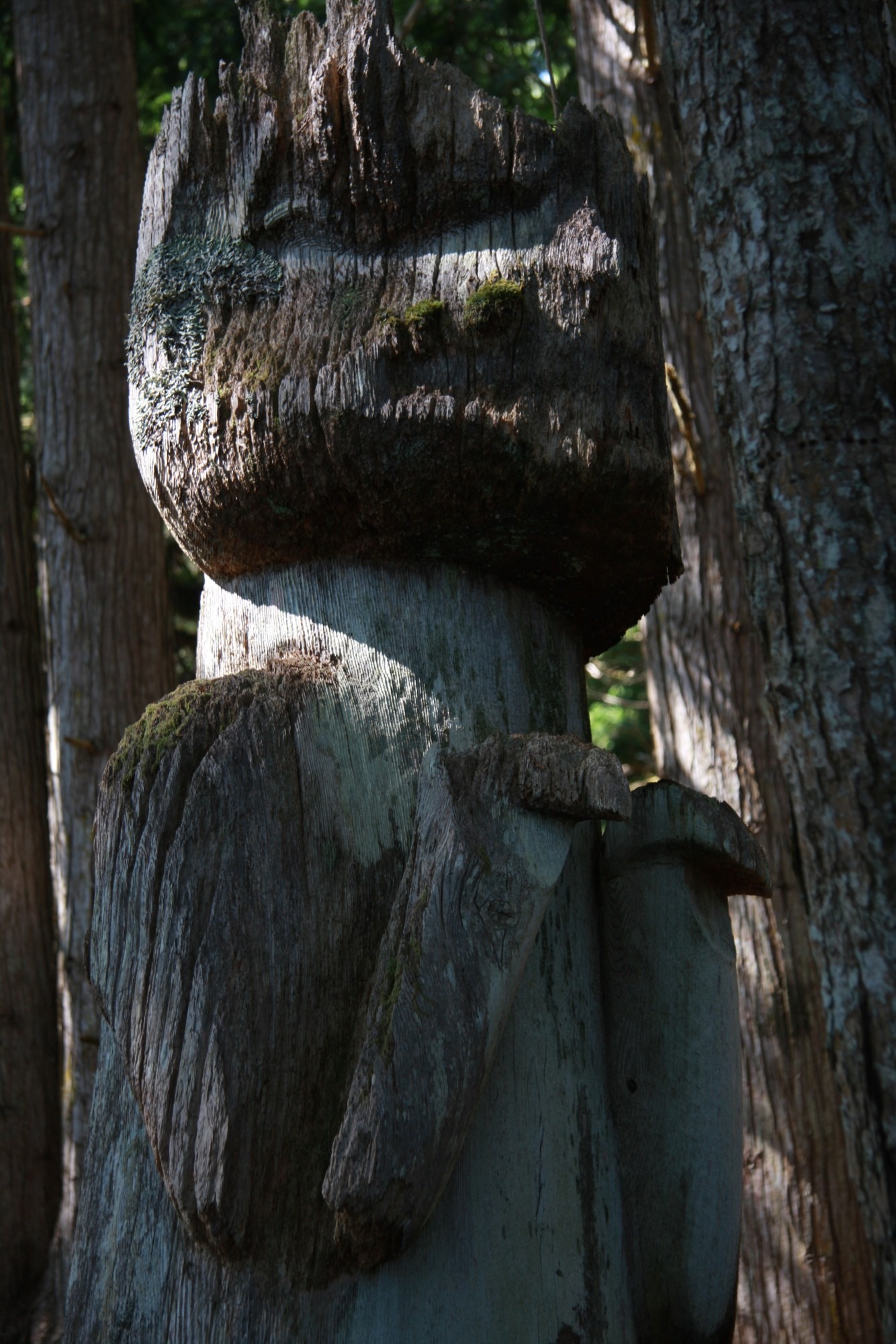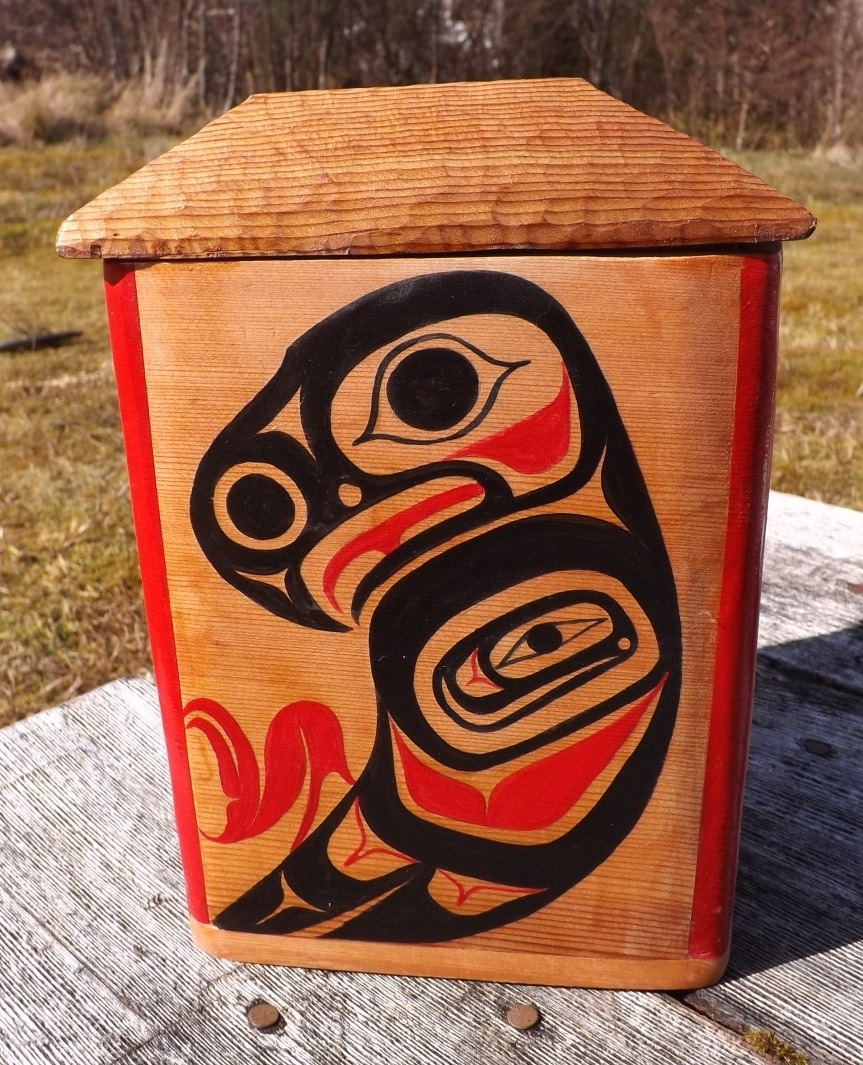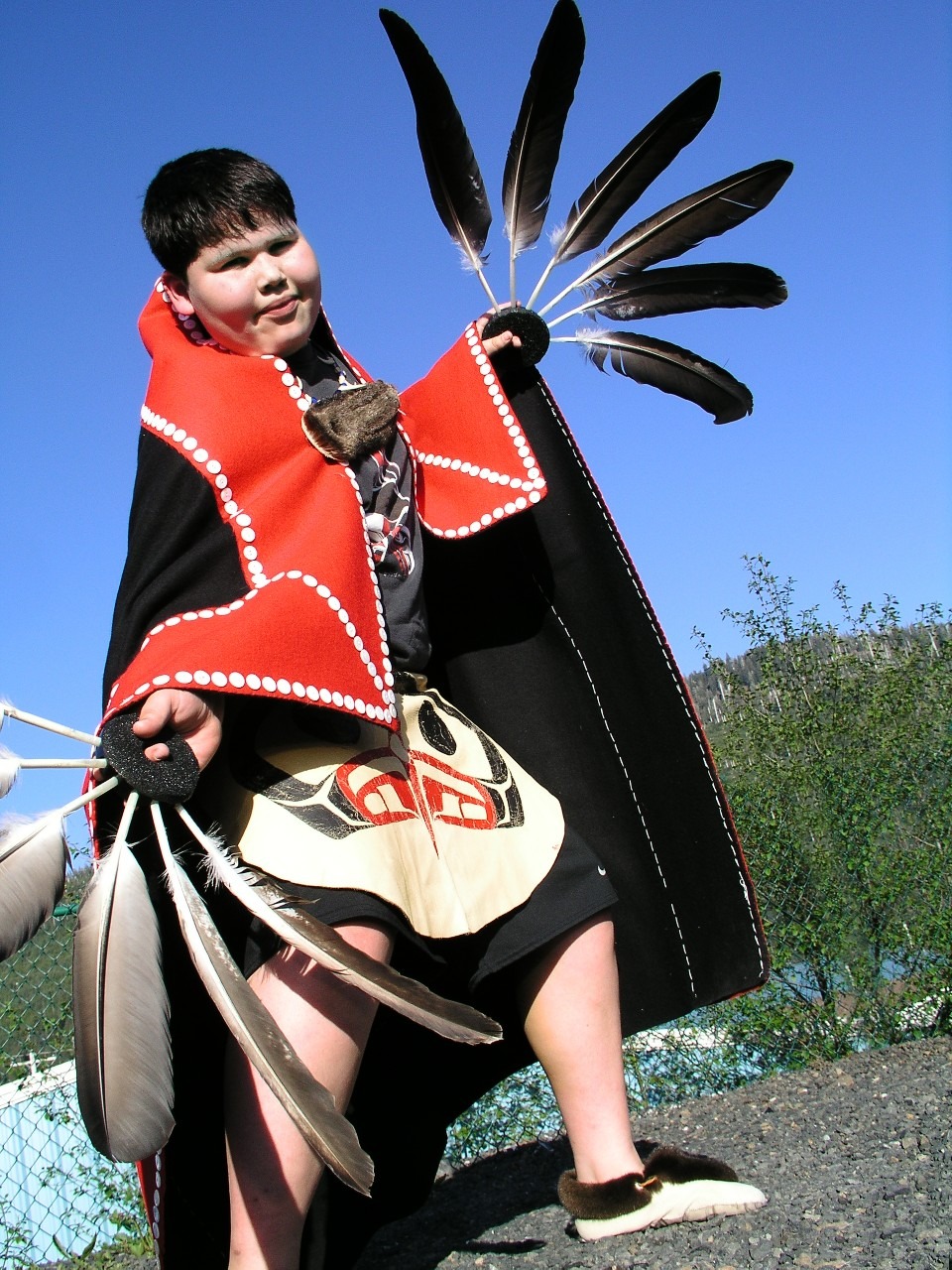Native Arts and Cultures
10,300 YEAR PRESENCE
First Peoples.


BENT WOOD BOX

REGALIA
Arts &
CULTURES
Other art forms include carved-wood and fur headpieces for ceremonies; intricate weavings of cedar bark and spruce root in baskets and hats; and button blankets, robes and aprons with totemic designs.
Songs in Alaska Native languages and dances also carry the cultural traditions. A lucky visitor arrives during a celebration such as a pole raising or potlatch; the display of regalia is stunning.
Come & Visit Us

Totem Poles
Klawock Totem Park displays 21 restored or replicated poles from the village of Tuxekan. Hydaburg and Kasaan also present significant totem pole collections. All of the island’s tribes welcome visitors and residents to enjoy their culture, where one can see young and old singing, dancing and drumming to keep their culture vital.
A pole carved in durable cedar might stand a century. Many poles seen today were carved in the 1930s by artists in the Civilian Conservation Corps replicating village poles to preserve a legacy. Contemporary poles are carved on commission and tell new tales. More than 10 poles have been raised in Klawock in a decade, including the Veteran's Memorial Pole which was raised in August of 2018. Hydaburg has replicated its entire totem park since 2009.
Young carvers continue a world-renowned tradition. When Native artists are at work in carving sheds, visitors are welcome to stop in and discover a rich art form firsthand. Traditionally, poles carved in cedar were commissioned to display success or to celebrate important events. To learn about seeing carvers at work, call ahead. Hydaburg Cooperative Association 907-285-3665. Kasaan Cultural Campus 907-542-2230. City of Klawock 907-755-2261
Pictured to the left is Master Carver, the late Stan Marsden, working on the Unity Pole which can be viewed in Kasaan.
